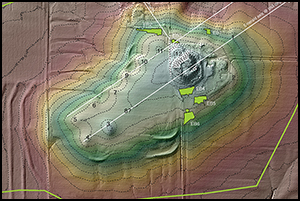Crossref Citations
This article has been cited by the following publications. This list is generated based on data provided by
Crossref.
Baires, Sarah E.
and
Baltus, Melissa R.
2017.
Matter, Places, and Persons in Cahokian Depositional Acts.
Journal of Archaeological Method and Theory,
Vol. 24,
Issue. 3,
p.
974.
Sofaer, Anna
Weiner, Robert
and
Stone, William
2017.
The Science of Time 2016.
Vol. 50,
Issue. ,
p.
79.
Bengtson, Jennifer D.
2017.
Infants, Mothers, and Gendered Space in a Mississippian Village: Revisiting Wilkie’s House 1 at the Hunze-Evans Site.
Childhood in the Past,
Vol. 10,
Issue. 2,
p.
102.
Pauketat, Timothy R.
Boszhardt, Robert F.
and
Kolb, Michael
2017.
Trempealeau’s Little Bluff: An Early Cahokian Terraformed Landmark in the Upper Mississippi Valley.
Midcontinental Journal of Archaeology,
Vol. 42,
Issue. 2,
p.
168.
Van Dyke, Ruth M
2018.
From enchantment to agencement: Archaeological engagements with pilgrimage.
Journal of Social Archaeology,
Vol. 18,
Issue. 3,
p.
348.
Hedman, Kristin M.
Slater, Philip A.
Fort, Matthew A.
Emerson, Thomas E.
and
Lambert, John M.
2018.
Expanding the strontium isoscape for the American midcontinent: Identifying potential places of origin for Cahokian and Pre-Columbian migrants.
Journal of Archaeological Science: Reports,
Vol. 22,
Issue. ,
p.
202.
Skousen, B. Jacob
and
Huber, Allison L.
2018.
The Moorehead Phase Occupation at the Emerald Acropolis.
Midcontinental Journal of Archaeology,
Vol. 43,
Issue. 3,
p.
214.
Jacob Skousen, B
2018.
Rethinking archaeologies of pilgrimage.
Journal of Social Archaeology,
Vol. 18,
Issue. 3,
p.
261.
Betzenhauser, Alleen
and
Pauketat, Timothy R.
2019.
9 Elements of Cahokian Neighborhoods.
Archaeological Papers of the American Anthropological Association,
Vol. 30,
Issue. 1,
p.
133.
Pauketat, Timothy R.
2020.
When the Rains Stopped: Evapotranspiration and Ontology at Ancient Cahokia.
Journal of Anthropological Research,
Vol. 76,
Issue. 4,
p.
410.
Skousen, B. Jacob
Larson, Timothy H.
Malouchos, Elizabeth Watts
Kruchten, Jeffery D.
Barzilai, Rebecca M.
Alt, Susan M.
and
Pauketat, Timothy R.
2020.
Archaeological Investigations on the Emerald Avenue, a Potential Mississippian Period Roadway in Southwestern Illinois.
Journal of Field Archaeology,
Vol. 45,
Issue. 5,
p.
372.
Smith, Michael E.
2020.
Definitions and Comparisons in Urban Archaeology.
Journal of Urban Archaeology,
Vol. 1,
Issue. ,
p.
15.
Watts Malouchos, Elizabeth
2020.
Angel Ethnogenesis and the Cahokian Diaspora.
Journal of Archaeological Method and Theory,
Vol. 27,
Issue. 1,
p.
128.
Emerson, Thomas E.
Hedman, Kristin M.
Brennan, Tamira K.
Betzenhauser, Alleen M.
Alt, Susan M.
and
Pauketat, Timothy R.
2020.
Interrogating Diaspora and Movement in the Greater Cahokian World.
Journal of Archaeological Method and Theory,
Vol. 27,
Issue. 1,
p.
54.
Sassaman, Kenneth E.
Blessing, Meggan E.
Goodwin, Joshua M.
Jenkins, Jessica A.
Mahar, Ginessa J.
Boucher, Anthony
Barbour, Terry E.
and
Donop, Mark C.
2020.
Maritime Ritual Economies of Cosmic Synchronicity: Summer Solstice Events at a Civic-Ceremonial Center on the Northern Gulf Coast of Florida.
American Antiquity,
Vol. 85,
Issue. 1,
p.
22.
Baires, Sarah E.
2020.
Some Comments on Situations in the Midcontinental Middle Woodland.
Midcontinental Journal of Archaeology,
Vol. 45,
Issue. 3,
p.
290.
Wilson, Gregory D.
Bardolph, Dana N.
Esarey, Duane
and
Wilson, Jeremy J.
2020.
Transregional Social Fields of the Early Mississippian Midcontinent.
Journal of Archaeological Method and Theory,
Vol. 27,
Issue. 1,
p.
90.
Buchanan, Meghan E.
2020.
Diasporic Longings? Cahokia, Common Field, and Nostalgic Orientations.
Journal of Archaeological Method and Theory,
Vol. 27,
Issue. 1,
p.
72.
Baires, Sarah E.
2020.
Some Comments on Situations in the Midcontinental Middle Woodland.
Midcontinental Journal of Archaeology,
Vol. 45,
Issue. 3,
p.
290.
Kessler, Nicholas V
2021.
THE DISTRIBUTION OF AGE DISPARITIES IN CONIFER CHARCOAL FROM ARCHAEOLOGICAL STRUCTURES AND APPLICATIONS FOR TREE-RING-RADIOCARBON DATING.
Radiocarbon,
Vol. 63,
Issue. 6,
p.
1607.



